What is it with moons in fantasy? Is it possible that Earth’s rocky tag-a-long is too boring and barren for us? Fantasy moons need verve, a bit of spice! They can’t simply hang out, endlessly revolving, reflecting the light of whatever sun(s) shine on the magical worlds we hold dear…
I’m working on my own fantasy story about a weird and magical moon, and it’s inspired me to look into other stories that make the moon more than a simple rock locked in orbit with a larger mass. Fantasy has no shortage of lunar lunacy; below, let’s discuss five of my favorite moons. As always, I want to hear your own favorites in the comments!
The Spear Cuts Through Water by Simon Jimenez
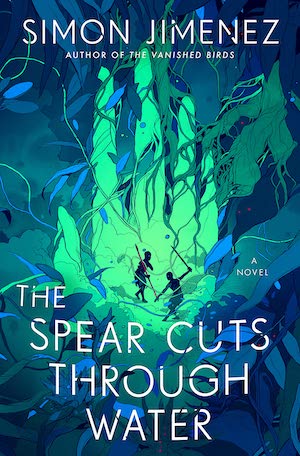
In one of 2022’s best novels, Simon Jimenez writes of two unlikely companions as they accompany a moon goddess on a cross-country journey, where many perils and discoveries await. The empire is falling into disarray around them, and scores of enemies seek to capture the goddess for their own nefarious purposes.
The Old Country brims with magical beings and happenings. The moon goddess is one of the most powerful, and her absence leaves a circle of impenetrable black in the night sky. Roaming the lands after sunset is incredibly dangerous without the fleeing moon goddess to light the world. Jun and Keema learn many of the Old Country’s darkest secrets in their travels alongside the moon incarnate.
If you haven’t read The Spear Cuts Through Water, I recommend it both for Jimenez’s take on the moon and simply because it’s amazing from cover to cover. Jimenez reinvents the ways fantasy stories can be told and appreciated, all while weaving a compelling tale of his own.
Kubo and the Two Strings
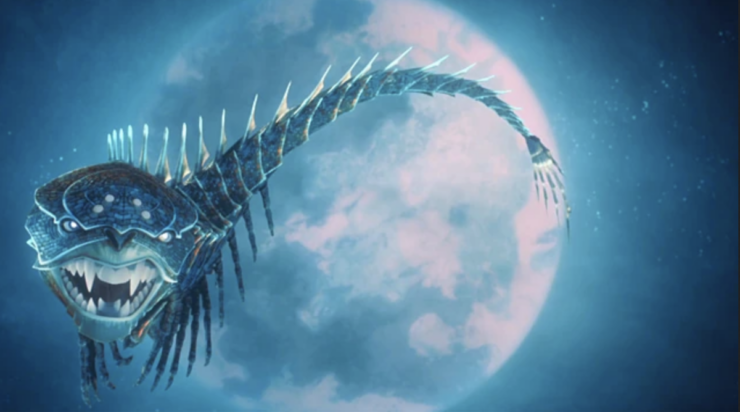
Studio Laika’s Kubo and the Two Strings follows the titular Kubo on a journey to escape his grandfather Raiden, the Moon King, who seeks to take Kubo’s power for himself.
In the opening scenes, we learn that Kubo can’t stay out past sunset for fear of Raiden finding and capturing him. We don’t meet Raiden for most of the movie’s runtime. Instead, he exists in quick references, driving the story onward with the threat of his presence. He is a looming figure in the periphery of Kubo’s adventure, often sending his powerful masked daughters to do his dirty work.
The Moon King contributes to much of the story’s suspense. Who, exactly, is he? What powers does he have? Why does he want Kubo for himself? When we finally meet the Moon King in the flesh, we get answers and some new questions.
Kubo touches on a plethora of important themes, including the power of memories and generational trauma. The Moon King brings these issues to the forefront, presenting himself as a wizened and gentle old man. What lurks beneath the surface is far more sinister, perhaps an allusion to our moon’s light and dark sides.
The Legend of Zelda: Majora’s Mask
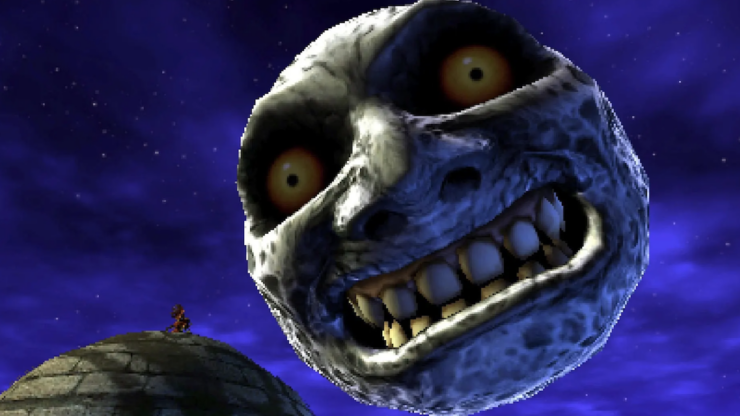
Is Termina’s angry-faced lunar harbinger of doom the most iconic fantasy moon of all time? In video games, at the very least? I say yes.
Majora’s Mask is a divisive entry in the Zelda canon. It’s a direct sequel to Ocarina of Time, and it upended the traditional series formula with its 3-day time loop (a mechanic few games have come close to replicating, I might add).
Sure, all fine and dandy, but however you feel about the game itself, it’s hard to deny how simply iconic the moon is. Huge. Mad. Careening toward the land below where it will eventually cause an apocalypse. Never mind how the moon came to be a face or what the planet below did to deserve this fate. It’s a stand-in for impending armageddon, and the citizens beneath it waver between trying to live out their lives as normal and quaking with fear.
No matter the moon’s motives, it’s up to you (playing as Link) to stop it. Whether you like it or not, your fate is tied to the terrifying face-rock above.
Avatar: The Last Airbender
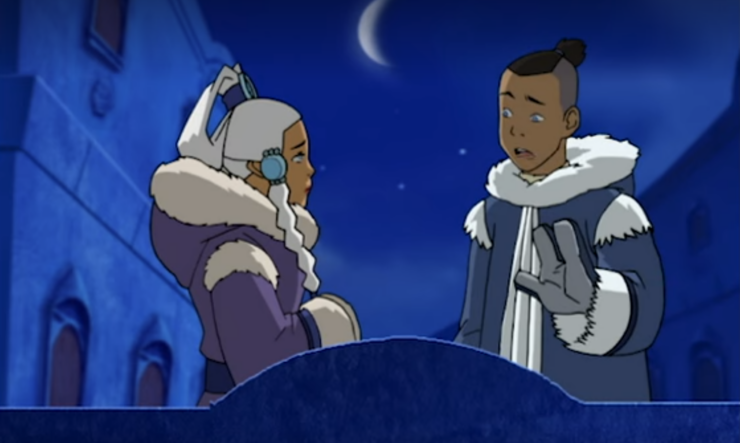
Ever had your girlfriend turn into the moon? “That’s rough, buddy.”
Yue sacrifices herself to restore the moon and, by extension, the balance of the world. Admiral Zhao destroys the moon spirit during the siege of the north, turning the world into a red-tinged hellscape where waterbending is no more. Everyone’s favorite uncle, Iroh, then reminds Princess Yue of the Northern Water Tribe that she had once been healed by the moon spirit Tui when she was sick as a baby. To repay that debt and save the world, she sacrifices herself and takes up the mantle of the spirit.
I’ve always appreciated Avatar for its ability to juggle meaningful motifs with cartoonish moments of levity. This episode marked one of the show’s earliest moments of pure drama. The stakes were high. The moon was gone. Without it, the world would’ve descended into chaos at the hands of the imperialist Fire Nation. Yue had to choose between herself—including her budding relationship with Sokka and her duties as a Princess—and the world. It’s a difficult choice, but she does what’s right. Every time we see the moon after her sacrifice (even if its phases are riddled with continuity errors, as pointed out in Overanalyzing Avatar), we’re reminded that it isn’t just an object in the sky. It’s a symbol of Yue’s sacrifice, and a reminder of Aang’s ongoing mission to restore balance to the world.
The Legacy of the Mercenary King by Nick Martell
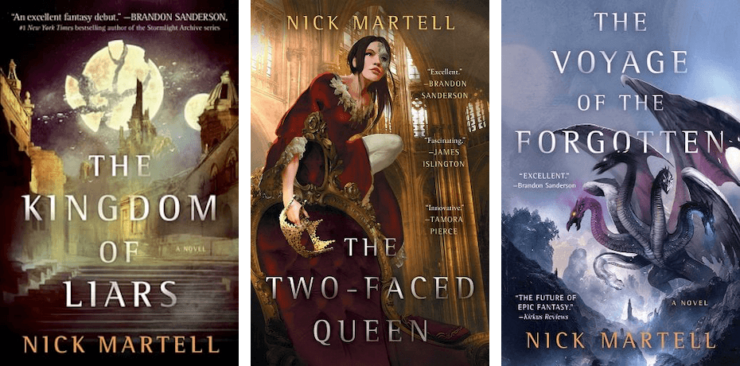
Finally, we come to Nick Martell’s fast-paced epic fantasy story. The cost of using magic is paid in one’s own memories. The land is filled with discontent, intrigue, and the possibility of armed rebellion. The moon is fractured and crumbling, and it sends chunks of rock hurtling to the planet below.
In book one, The Kingdom of Liars, we meet Michael Kingman. He’s the son of a disgraced and executed father who was accused of killing the king’s nine-year-old son years ago. Michael starts to uncover bits of evidence that hint at his father’s innocence. Danger ensues, as people who know the truth try to stop him.
I’ve only read the first two books in the series, and in those two, the moon remains an intriguing element that has yet to be fully explored. Celona is one of two moons, actually, but I’m specifically talking about the broken one—it’s in seven major pieces, with smaller fragments occasionally raining down from the sky. The city has an alarm system to warn citizens of impending moonfall. I imagine the third book, The Voyage of the Forgotten, ventures deeper into Celona’s lore and history. Even if it doesn’t, it’s one hell of a concept that adds interesting depth to Martell’s world.
Cole Rush writes words. A lot of them. For the most part, you can find those words at The Quill To Live or on Twitter @ColeRush1. He voraciously reads epic fantasy and science-fiction, seeking out stories of gargantuan proportions and devouring them with a bookwormish fervor. His favorite books are: The Divine Cities Series by Robert Jackson Bennett, The Long Way To A Small, Angry Planet by Becky Chambers, and The House in the Cerulean Sea by TJ Klune.










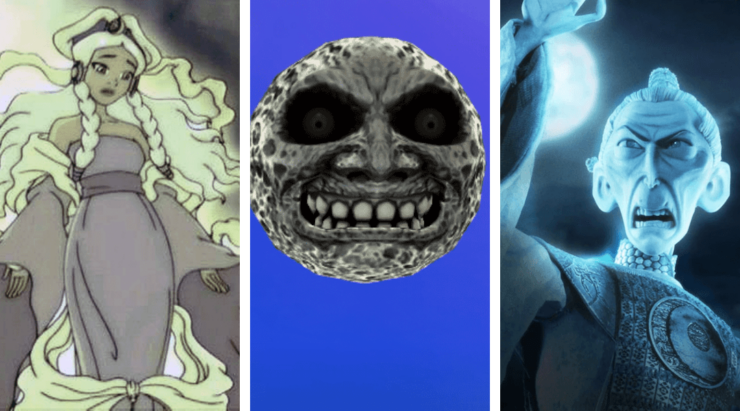
What’s I find really notable about that is that he comes out with this incredibly unwise piece of fabulous scenery chewing:
This is not exactly the most sensible thing to say in any work of fiction (or, I suppose, in real life). You almost feel sorry for the giant idiot. Almost.
(The same episode also featured probably the most terrifying and frequently-reused-in-fanfic one-shot character in the series, Koh the Face-Stealer. Where Zhao was hyperbolic Koh was a contrast in mellifluous urbanity… and all the more terrifying for that.)
Hmmm. Gardens of the Moon comes to mind here, as does, of course, The Name of the Wind…
There’s the Moon That Never Sets in the videogame Legend of Dragoon. A major driving force behind the main plot, appears to be a second moon and as the name implies it never sets.
For a sci-fi twist on it, in David Weber’s Fifth Imperium books, Earth’s moon turns out to be a colossal spaceship.
There’s also that freakish moon in Soul Eater (or if you prefer, Sooooouuuuul Eater).
Alistair Reynolds book Pushing Ice, where Saturn’s moon Janus suddenly sheds its camouflage and begins to move out of the solar system, its fact-finding mission complete.
H.G. Wells’ First Men in the Moon, in which the Moon is home to the insectoid civilization of the Selenites (I’m thinking of the 1964 movie with Ray Harryhausen’s always stellar stop-motion work) comes to mind.
Of course, there’s also Space: 1999, where Gerry Anderson’s marionettes are trapped on the Moon after a massive nuclear explosion launches it into space.
What’s that?
Those are human beings, you say?
I knew they walked better than normal…and without strings!
See also the Dr. Who episode “Kill the Moon” (aired October 4, 2014, featuring Peter Capaldi as the Twelfth Doctor), in which the Moon turns out to actually be a gigantic egg that is about to hatch into some unknown creature.
The Tale of Princess Kaguya, one of the lesser known Studio Ghibli films in North America features the moon princess taking on human form to experience life on Earth. Not to be missed.
@@@@@ 9: I read “The Tale of the Bamboo Cutter” (the original story) as a child, so Princess Kaguya was for me a dream fulfilled. One of the most beautiful, most poignant movies I have ever seen.
The ending manages to break your heart into little pieces and stomp on them while the soundtrack plays uplifting party music.
Elizabeth Hand’s Waking the Moon is about the return of the Moon Goddess, Othiym Lunarsa, who means to bring about the fall of the patriarchy and replace it with something even worse.
You can’t trust the moon if it’s in a Final Fantasy game that includes the Roman numerals “IV.” In FFIV, the second moon is a stasis ship for a race of wandering folk whose planet was destroyed. In FFXIV, the second moon Dalamud is no moon, but a Bahamut Containment Device, and the first moon wasn’t exactly a feature during the time of the Ancients (and may not actually be all that different from Dalamud in some respects…)
@9, 10: Yes, I saw it in theaters and loved it. Definitely a film that benefited from being on a full movie screen.
I don’t remember if it was a moon, but Babylon 5 might be included.
@14 (and in general): That’s no moon. It’s a space station.
In Elizabeth Bear’s Eternal Sky trilogy, beginning with Range of Ghosts, each land has a different moon or moons in the night sky. In the Khaganate (equivalent to the Mongol Empire), there are many small moons in the sky, all different, each one corresponding to one of the male descendants of the empire’s founder; when one of them dies, his moon vanishes. Other countries may have a single moon, but its appearance and direction in the sky may vary. When one state seizes territory from another, the night sky over the conquered territory changes to that of the conqueror. (I confess that I have only read the first book in the trilogy so far, but not the sequels.)
I have seen a number of settings where the moon or moons are involved in magic in some way, either materially (e.g., fallen fragments of a moon with magical qualities) or by influencing the energy of magic in some way, sometimes depending on the phase of the moon or whether it is visible in the sky. One example that comes to mind is the RPG setting Jorune, where the planet’s seven moons are associated with the seven forms of isho (magical/psionic energy) that the inhabitants can tap into. (Another is the 1980s computer game Ultima IV: Quest for the Avatar, where the planet has two moons that are tied to “moon gates” (magical portals) that allow travel between different points on the map. The phase of one moon indicates the gate that can currently be entered, while the phase of the other indicates the destination.)
Another sci-fi-ish twist is from Transformers: Beast Wars, where one of the planet’s two moons turns out to be a planet-destroying superweapon created by time-travelling/ancient aliens to sterilize their “experiment.”
(Destroying the planet-buster establishes that the planet was prehistoric Earth all along.)
Do we count apollo 18, where the moon is full of moon spiders?
The anime “Tengen Toppa Gurren Lagaan” – The moon is actually a giant failsafe weapon designed to destroy humanity if earth’s population gets too big.
OK, it’s science fiction, but Jack Vance’s “The Face”
The third campaign of Critical Role has Ruidus, one of the two moons of the world of Exandria, as a central plot point. There is far more to it than meets the eye.
More SF (sorta) . . .in John Varley’s Titan, first of the Gaea trilogy, the newly discovered Saturnian moon Themis turns out to be a living being in the form of a vast ringworld.
How about Maurice Sendak’s We are All in the Dumps With Jack and Guy? It’s a picture book (can’t really call it a children’s book), about unhoused children who are rescued by a fierce morphing moon.
The Moon is a beautiful woman in Goddard’s HANDS OF THE EMPEROR.
In Lynn Flewelling’s wonderful NIGHTRUNNER series (one of my desert island reads, full disclosure), the moon–specifically in crescent form–is the actual god Illior, patron of elvenfolk, dreams, madness, and tricksters–of our heroes, forsooth.
I’d also like to mention NKJemisin’s BROKEN EARTH trilogy here just in passing, but without spoilers.